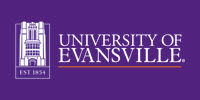Below is a summary of the abstract you submitted. Presenting author(s) is shown in bold.
If any changes need to be made, you can modify the abstract or change the authors.
You can also download a .docx version of this abstract.
If there are any problems, please email Dan at dar78@pitt.edu and he'll take care of them!
This abstract was last modified on March 21, 2023 at 12:53 p.m..

Through the SEA-PHAGES project, we investigated a bacteriophage that was found in an organic soil layer within a garden in Chandler, Indiana. Our bacteriophage was isolated, purified, amplified, and underwent genomic sequencing and was later named Phredrick the phage. Upon sequencing and auto annotation, it was determined that Phredrick was 128,873 base pairs in length and contained 240 genes. For the purpose of investigation, we have been manually annotating Phredrick's genome to further explore its genetic components. With many advancements in auto annotation, many ask, “Why still do manual annotation”? There are many ways in this series of auto annotations that proves manual annotation to still be the better method for annotating genes. These problems can arise from algorithm errors, to completely misclassifying the functions of certain genes, bad alignment, coding potential and violations. So simple algorithms struggle to accurately annotate an entire genome. Our findings show that the auto-annotation was correct the majority of the time, however, there are specific instances where we had to manually change start codons or mark a gene that was called by auto-annotated as not a gene.
